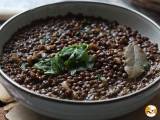Did you know that cooking pasta influences its caloric impact? find out how

Pasta, that emblem of Italian cuisine that conquers tables all over the world, has been the victim of many prejudices. Often associated with calorie diets, its reputation as "hypercaloric" is unfair if one key factor is considered: the way it is cooked. The difference between an al dente and an overcooked pasta dish may seem subtle, but it has a significant impact on the way our bodies metabolize carbohydrates.
The firm, slightly tough texture of al dente pasta is not only a pleasure to the palate, but also a metabolic ally. When cooked for less time, the starch in the pasta partially gelatinizes, which makes its glycemic index lower. This means that the body digests the sugar it releases more slowly, avoiding blood glucose spikes and prolonging the feeling of satiety.
It is no coincidence that Italy, land of pasta, has surprisingly low rates of obesity. In addition to respecting the proportions, cooking pasta al dente, it also tends to prioritize fresh ingredients in its preparations, its secret lies in balance: pasta is a dish that celebrates quality over quantity. That is why they often accompany their pasta dishes with vegetables, herbs and healthy oils.
Understanding the relationship between cooking and the caloric impact of pasta is a step toward guilt-free enjoyment of this culinary gem. So, the next time you prepare your spaghetti with shrimp and cherry tomatoes, your macaroni with Bolognese sauce or a simple pasta alla Norma, remember that leaving pasta "al dente" is not only more authentic, but also healthier.
The secret is in the glycemic index
The glycemic index (GI) measures how a food raises blood glucose levels. Al dente pasta has a lower GI compared to overcooked pasta, according to studies published in journals such as The American Journal of Clinical Nutrition. This means that carbohydrates are released more slowly, avoiding insulin spikes and promoting a greater feeling of satiety.
Chef and culinary expert Gennaro Contaldo backs up this claim: "Cooking pasta al dente not only improves its texture, but also helps the starches to be digested more slowly".
Pasta al dente: What does it really mean?
"Al dente" means "to the bite" in Italian, and refers to a cooking that leaves the pasta firm but cooked. The exact time varies according to the type of pasta, but is generally 2 to 3 minutes less than indicated on the package.
When pasta is overcooked, the starches gelatinize further, which increases its GI and accelerates the release of simple sugars into the bloodstream. This can contribute to weight gain and energy imbalances.
Impact on calories absorbed
Cooking also affects the structure of starch in pasta. According to researchers at the British Nutrition Foundation, when pasta is cooked al dente, some of the starch remains in its resistant form. This type of starch acts more like a fiber than a carbohydrate, providing fewer calories because it is not fully digested.
On the other hand, reheating pasta after it has been cooled can increase the resistant starch content. This was demonstrated by a BBC study conducted by Dr. Denise Robertson, who observed a reduction in glycemic response when pasta was consumed reheated.
Tips for cooking and serving pasta in a healthy way
- Check the cooking time: Check the instructions on the package and test the texture of the pasta before removing it from the water. Look for that firm but pleasant point.
- Cool and reheat: If you plan to eat the pasta later, cool it quickly under water and store it in the refrigerator. Reheating will increase the resistant starch.
- Combine with healthy ingredients: Pair pasta with vegetables, healthy oils such as olive oil and lean protein sources. This reduces the overall glycemic load of the dish.
- Use whole-grain pasta: These have a lower GI and contain more fiber, which benefits both digestion and satiety.
Conscious cooking: the balance between taste and health
As chef Massimo Bottura stresses, "good cooking is not just about flavors, but also about how we take care of our bodies." Understanding the impact of cooking pasta is a reminder that small adjustments can make a big difference.



Comments